A Glimpse Into the Blooming World of Maurice Harris
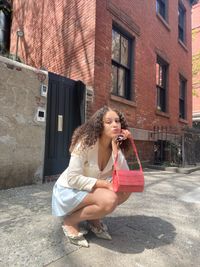

The old adage goes something like, when you can’t say it with words, say it with flowers—and that’s been Maurice Harris’s specialty. As the founder of the Los Angeles–based part-floral, part-coffee shop Bloom & Plume, Harris has grown his business into a crowd favorite both in the fashion and entertainment worlds. He’s dug out space in the industry by creating eye-catching, often sculptural, floral centerpieces for the likes of Gucci, Nike, Dior, The Row, MOCA, and LACMA.
Recently, he launched his first-ever show with Quibi, created floral arrangements for Beyoncé’s Black Is King, and secured a show on HBO Max. Basically, he’s out here blooming. You can understand, then, why we're budding with excitement to get a peek into his world. And luckily for us, he gave us the chance to follow him around for the day and dig a little deeper into his floral business, the inspiration behind Centerpiece, and his approach to style. Keep reading to learn more about the florist, whose work, style, and creativity will floor you.
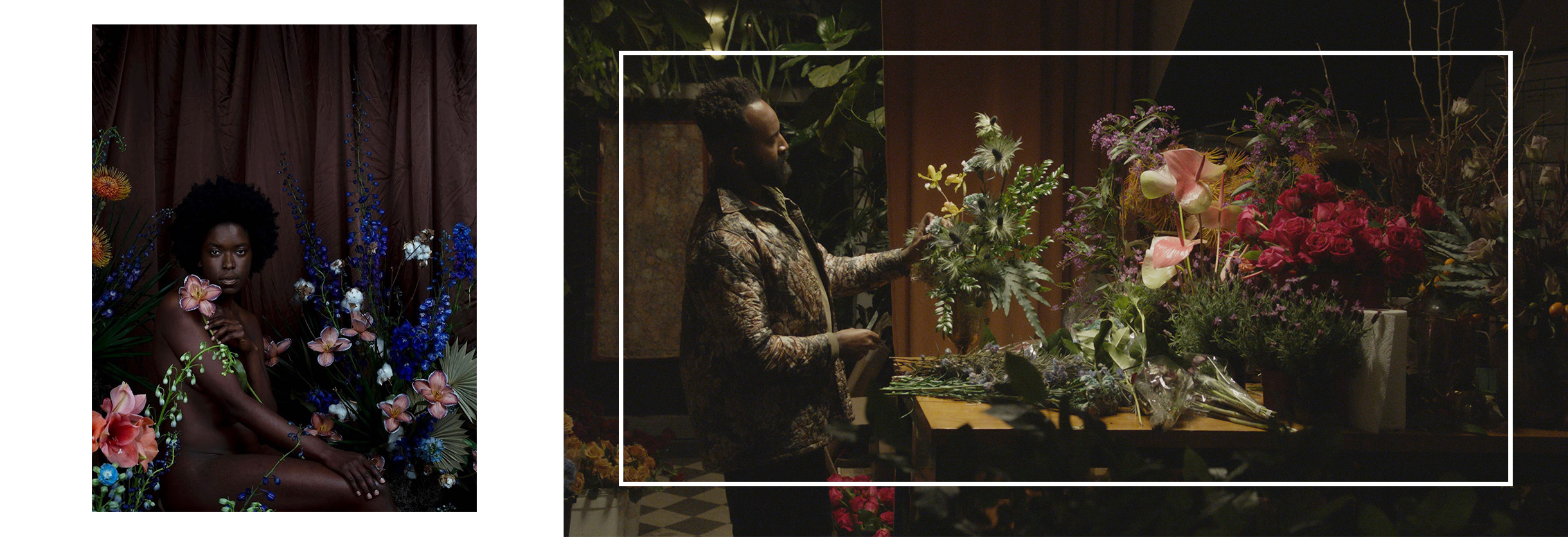
Let’s start at the beginning: How did you get into the floral business?
It kind of found me. I worked in window display and art production, and I was constantly Downtown sourcing materials. I found myself at the flower market a lot, and I just started playing around with them. People responded really well, so I kept doing it and refined my craft.
How did Bloom & Plume Coffee become an extension of your floral studio?
Flowers are such a luxury experience that have an exclusive entry point, but coffee is one of those luxuries that everyone affords themselves in 2020. I wanted to find a way to have the luxurious experience of flowers reach more people, and coffee seemed like the perfect vehicle to make that happen. Also, I saw my neighborhood changing (I've lived here for 18 years), and I saw all the changes happening, and I knew someone was going to open up a coffee shop, so I figured I would be the change I wanted to see, and here we are.
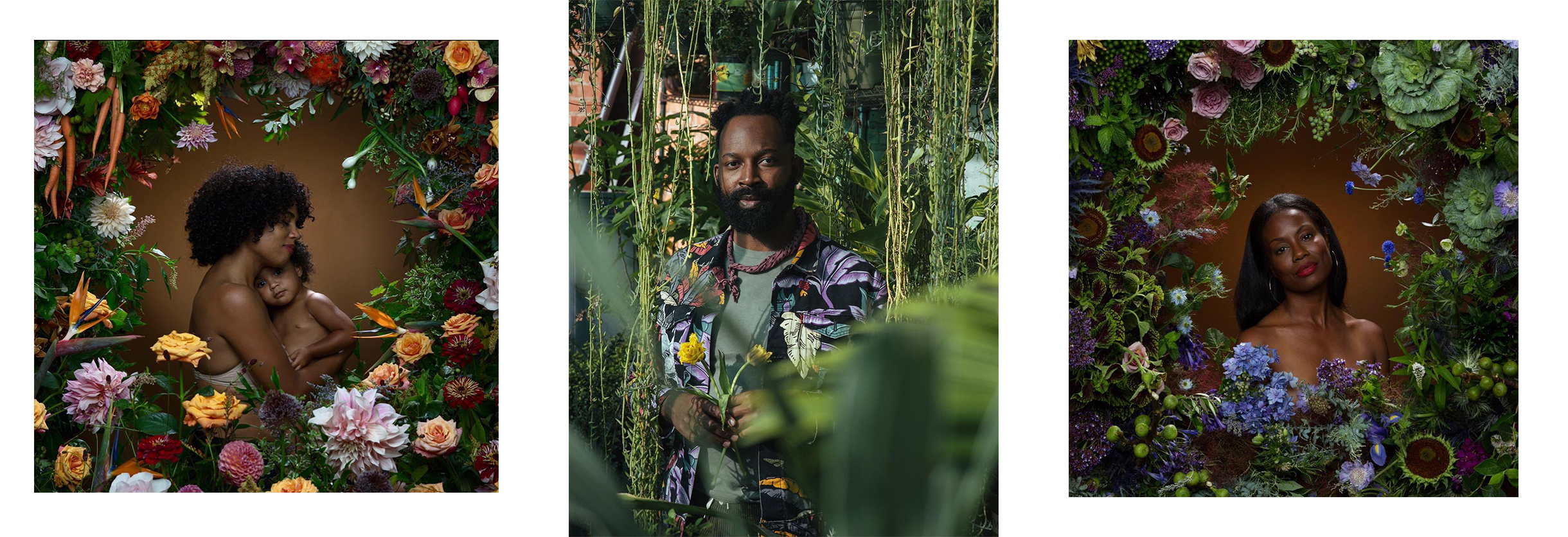
What has been your biggest learning curve since starting your own business?
Learning to manage cash flow. It's incredibly difficult to be trying to manage payroll, taxes, and all the fees that are required to run a legitimate business while properly balancing the price of material and labor versus product. It's a complicated formula that I'm still working on. Being that this country is founded on free labor (i.e., slavery) in 2020, we still expect labor to be free, so people are eager to pay top dollar for beautiful flowers, but they don't always want to pay me and my staff to do the work to make them beautiful. People are the most expensive part of running a business, but people are considered the least valuable in the public eye, so figuring out how to negotiate that has been and still is very hard.
What are some other vital Black-owned businesses that you’d like to shine a spotlight on right now?
This question is hard for me because it feels like either A) I am forgetting someone or B) the onus is on me to get it right, but here we go. Bloom & Plume Coffee needs all the love and support we can get. Union is a store that I shop at on a regular basis. They're friends of mine, and I love them. My Two Cents is a restaurant that is delicious and amazing.
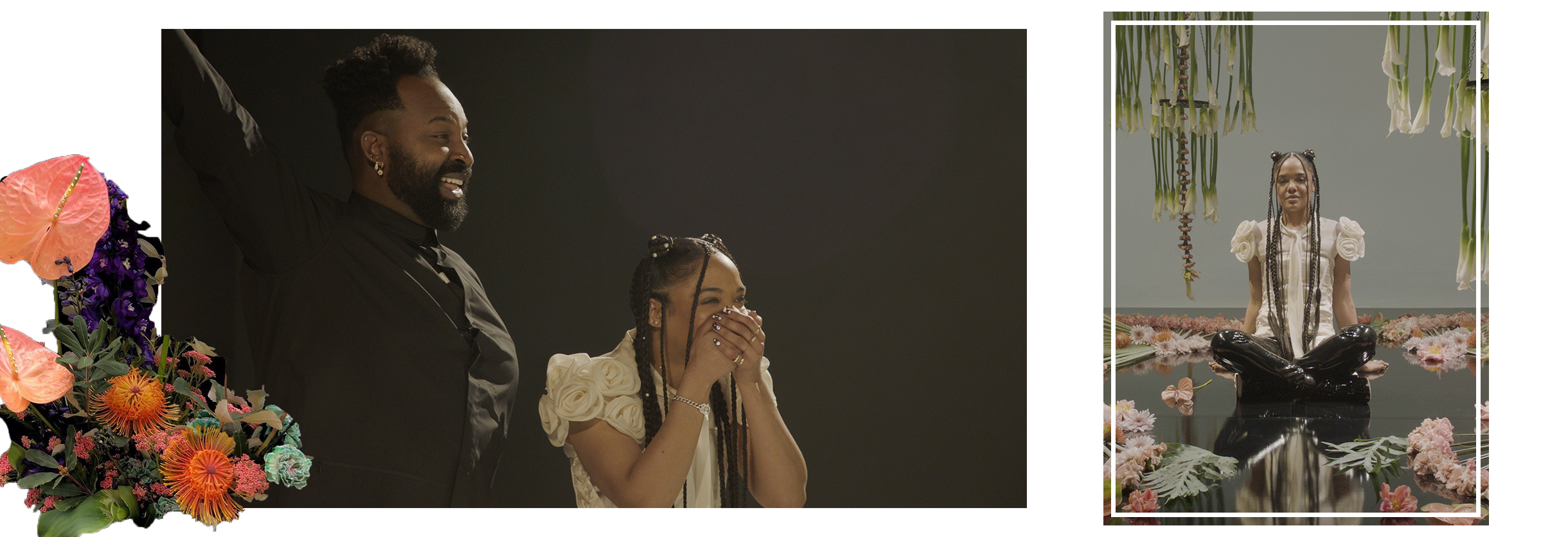
Let's talk about your Quibi show, Centerpiece. The concept for the show is unique, and the visuals themselves are so moving. How did the concept come about, and what references were on your mood board for the overall look and feel of the show?
My floral studio was on the mood board. My home was on the mood board. This show is a reflection of the things that are around me. We didn't have a huge budget to do it the way that I really wanted to do it, so I went with things I already had and aesthetics that I'd already developed. In terms of inspiration, it's a culmination of all my creative modalities, all the things that are important to me, and being able to translate those creatively, gracefully, and magically.
You have so many amazing guests on the show, including Tessa Thompson, Melina Matsoukas, and Jeremy O. Harris. Who is a dream future guest for you?
I would love to interview Donald Glover because I think his ability to create in completely different mediums and kill it is amazing. I would love to interview Rihanna and Beyoncé because I'm just so curious how they've accomplished so much in their careers (and even though they've gone about it in different ways, they have similar trajectories). Thelma Golden is at the top of my list. She is the fairy godmother to a lot of artists who are getting proper accolades currently, and it would just be absolutely fabulous to understand where her drive comes from and to celebrate and honor her for all the amazing work that she has done.
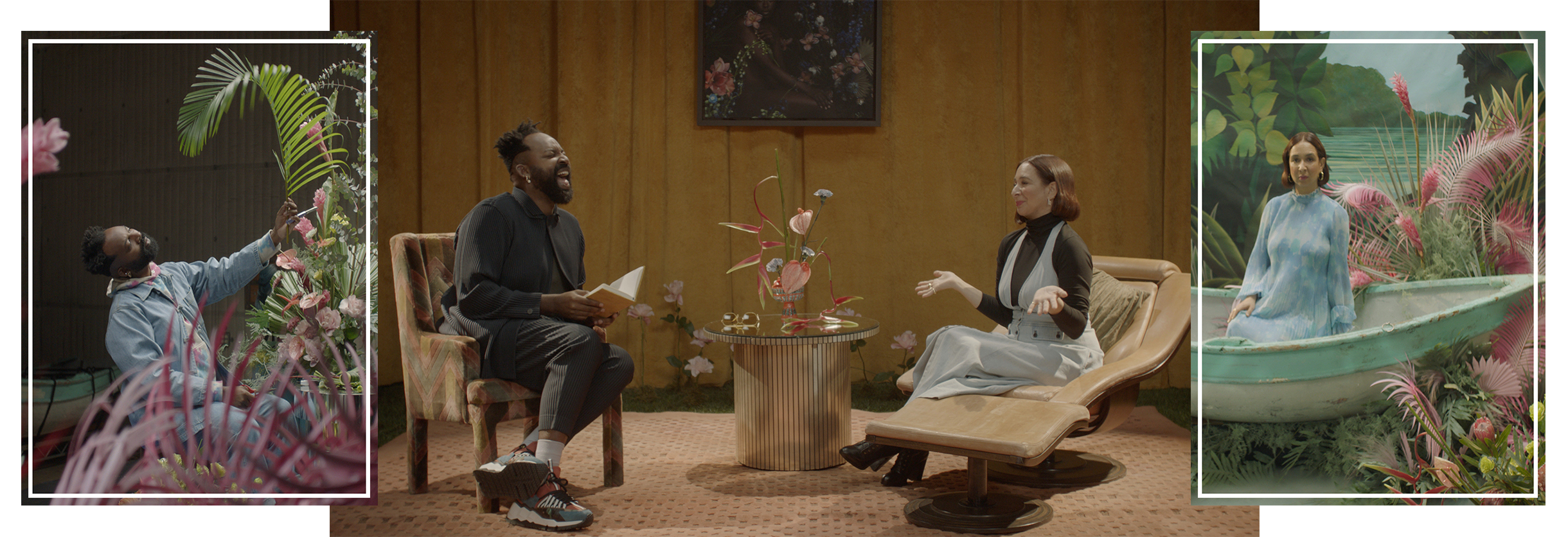
Your experience and a lot of your floral work are rooted in the fashion and beauty industries. How would you say that has influenced your personal style?
I've followed European high-end fashion since I was in high school, and I'm an obsessive person, so my obsession with couture definitely infused itself into my world, but I think I temper that with leaning into the history of my parents and grandparents, who were incredibly stylish people and brought it to the runway every Sunday at church.
How has your personal experience as a Black queer man influenced your creative relationship to art and style?
In the way that every human being's personal experience influences the things that they put out into the world. I think as a marginalized person with multiple intersections, I have the privilege to look at my disadvantages head-on and figure out how to tackle them in a way that can make the world a better place.
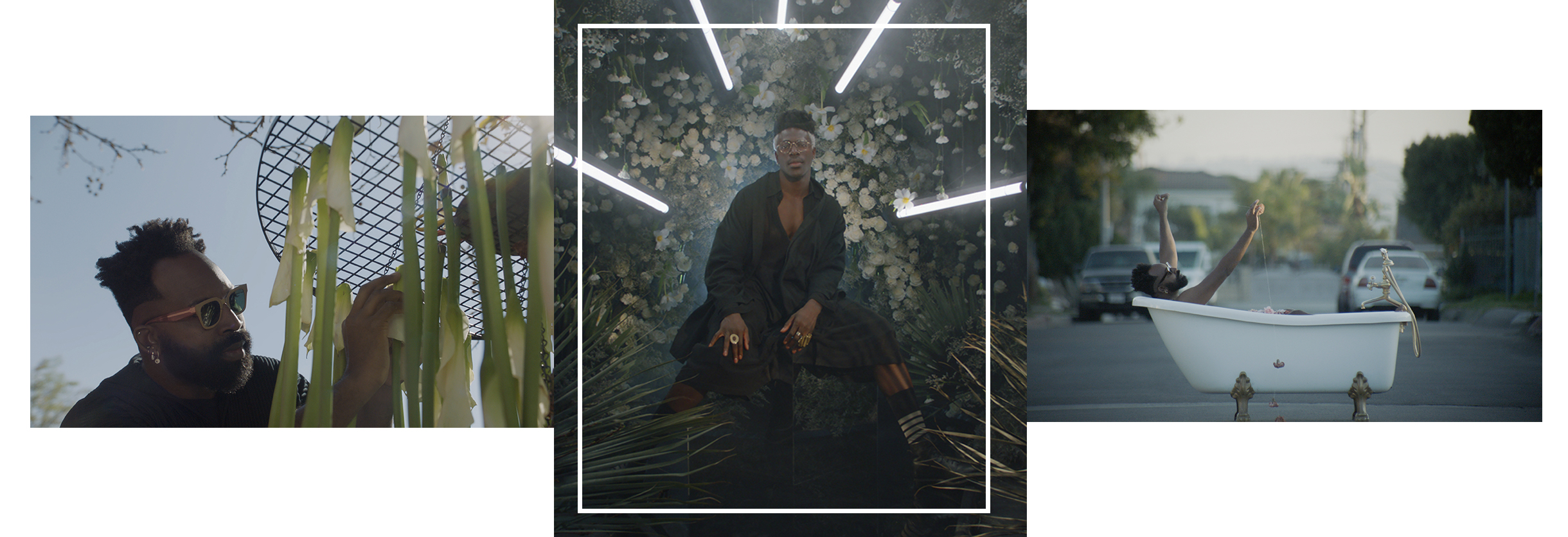
Do you think your art and your life’s work have challenged the conventional narratives around Black masculinity?
That's the goal, but who knows? That is something that I strive for, but you'd have to ask the people who view my artwork to see if it's actually doing so. I don't know culturally if it's making that big of a shift just yet. I also think that because my artwork deals with such sensitive and complicated subject matter, it is not easy to digest and process, and a lot of people in this country are interested in ease.
What does a day in the life look like for you?
Well, watch the video…
Do you have a favorite flower or a flower you feel represents your essence?
No. But if I did, I might say bird-of-paradise is a really good flower because it's tall, it stands out, it's resilient, it has vibrant colors, and people tend to dismiss it even though it is kinda bomb. I love a chocolate cosmo because it's velvety and flawless, and it's delicate, but it's also potent and powerful. And then I would say I love a passionflower because it's complicated in how it presents itself, but it's extremely beautiful in its complexity.
And finally, for our readers interested in mastering floral arrangements at home, what’s your most valuable piece of advice? And what is a common mistake you see most people make with their arrangements?
A common mistake that people make when it comes to creating floral arrangements is that people put their leaves into and under the water. You want to clear your stems of leaves and make sure your stems get to the bottom of your vessel so that they can drink the most amount of water. If you want to be good at anything, you have to practice, and when it gets difficult, you have to push through it. That's all that separates people who are really good at things—they push past the difficult part.
Next: 6 Models on Ableism, Visibility, and Personal Style
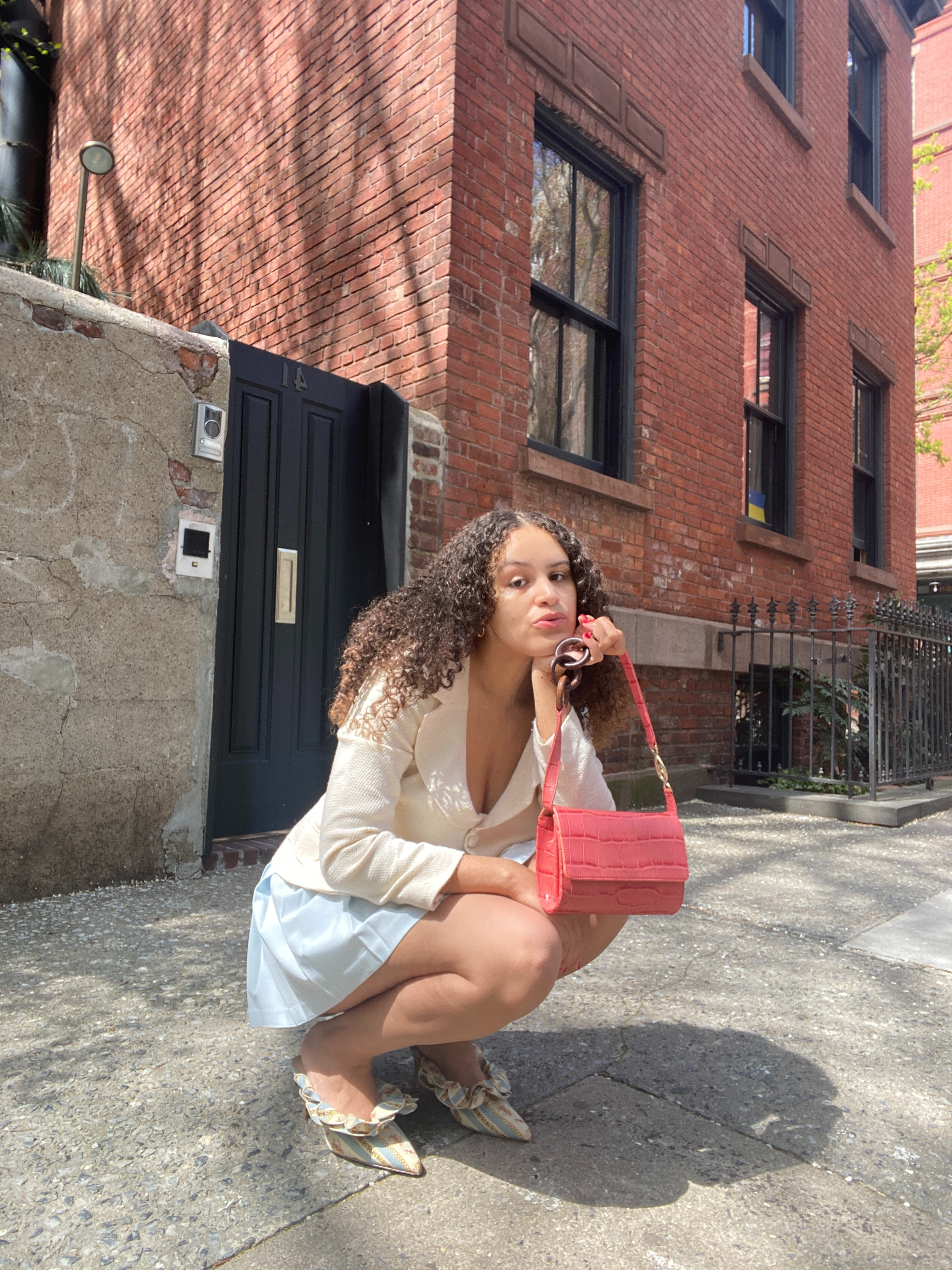
Jasmine Fox-Suliaman is a freelance writer and editor living in New York City. What began as a pastime (blogging on Tumblr) transformed into a lifelong passion for unveiling the connection between fashion and culture on the internet and in real life. Over the last decade, she's melded her extensive edit and social background to various on-staff positions at Who What Wear, MyDomaine, and Byrdie. More recently, she’s become a freelance contributor to other publications including Vogue, Editorialist, and The Cut. Off the clock, you can find her clutching her cell phone as she's constantly scrolling through TikTok and The RealReal, in search of the next cool thing.